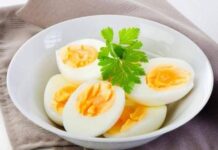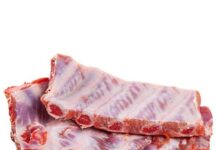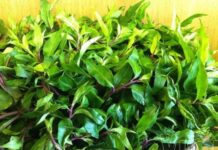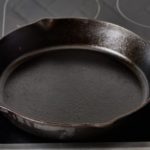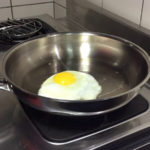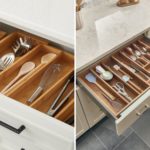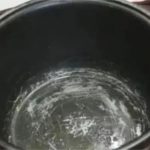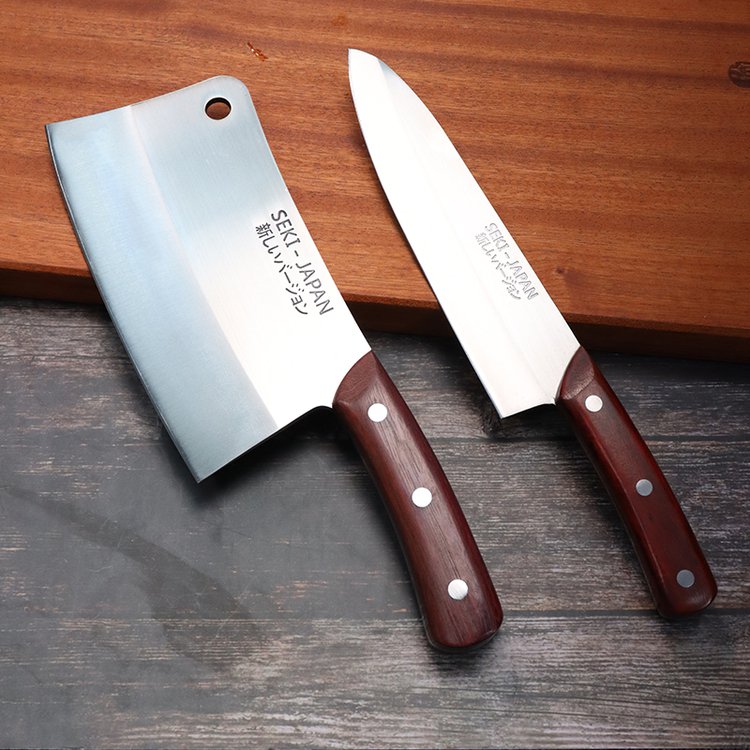
It’s a common belief that the holes in knives are purely for aesthetic purposes, but there’s more to it than meets the eye. Out of 10 people asked, 9 might assume the holes enhance the knife’s appearance, while one might attribute it to convenience for hanging storage. However, these assumptions only scratch the surface of the true functionality of these holes.
Preventing Food from Sticking to the Knife
Have you ever noticed how food, especially raw meat, tends to cling to your knife while chopping or mincing? It’s a chef’s pet peeve and a home cook’s frustration. Thankfully, the seemingly insignificant holes along the knife’s body come to the rescue. These holes minimize the surface area, allowing food to fall off effortlessly without the need for manual scraping.
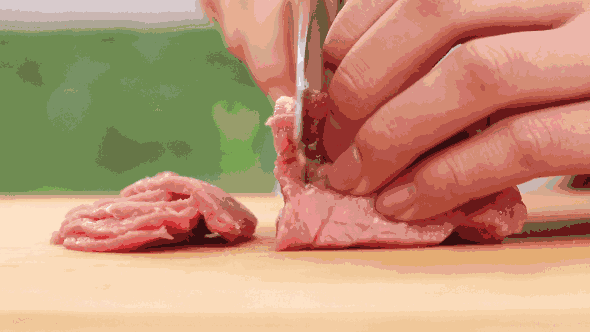
Food sticking to the knife is a common issue during cutting
From a physics perspective, when we cut, atmospheric pressure causes the food to adhere to the knife’s blade. The holes along the knife’s edge counteract this phenomenon, saving precious prep time.
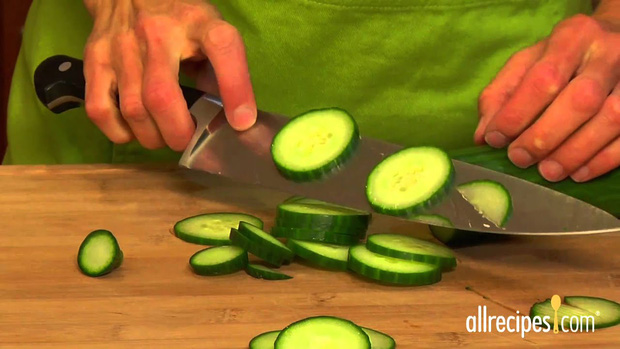
Without holes, food tends to stick to the knife
Relieving Pressure during Chopping for Durability
Take a closer look, and you’ll notice that knives designed for chopping bones, cleaving meat, or mincing tend to have larger holes. These holes serve a critical function: pressure relief and impact absorption.
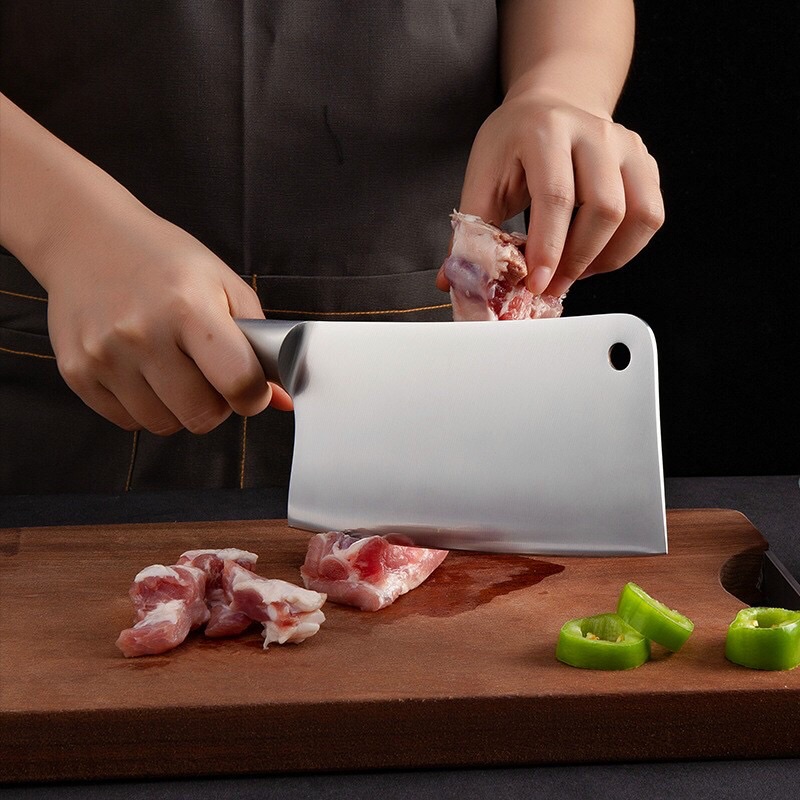
When you apply force to chop or cleave food, the pressure reverberates through the knife, potentially causing vibrations and, in some cases, even breakage. The holes at the tip of the knife disperse this force, ensuring the knife’s longevity and protecting it from damage.
Hanging Storage for Easy Access and Rust Prevention
The hole at the tip of the knife serves another practical purpose. Knives made of iron, steel, or copper are susceptible to rust and deterioration if exposed to moisture. By providing a hanging storage option, the hole allows you to air-dry the knife, preventing rust and maintaining its longevity.
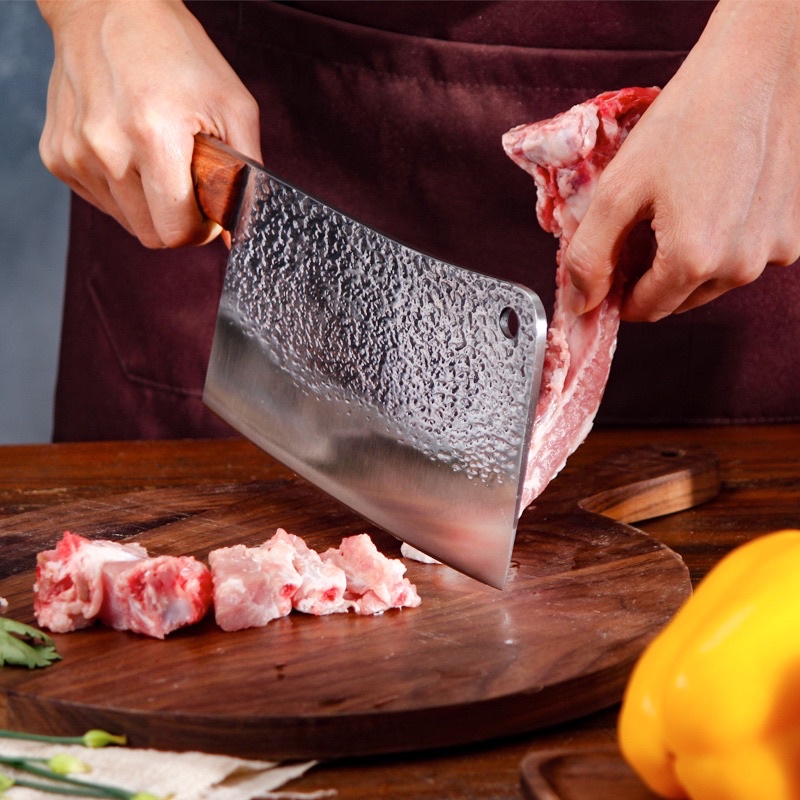
Hanging storage also contributes to a neat and organized kitchen, saving valuable counter or drawer space.
The Function of Holes Along the Blade
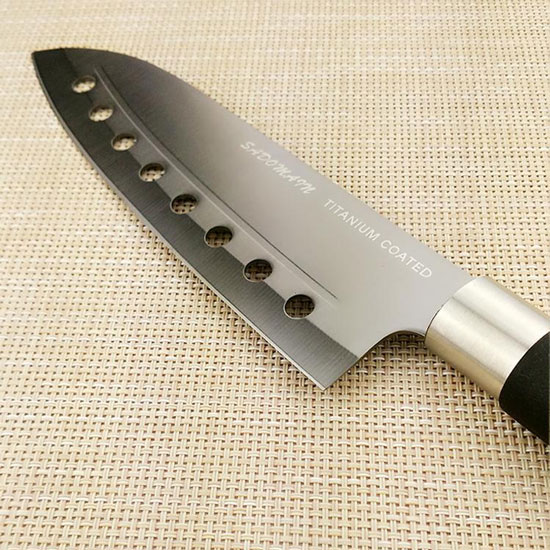
Some knives feature small holes along the underside of the blade, which might seem odd at first glance. Rest assured, these holes serve a similar purpose as the ones previously mentioned—they reduce atmospheric pressure, preventing food from sticking to the knife.
Whether you’re chopping vegetables or slicing meat, raw or cooked, these holes ensure that food doesn’t cling to the blade, making the cutting process smoother and more efficient. In the case of cooked meat, it also enhances food hygiene, contributing to your family’s health and well-being.
Source: Giadinh.net
Why Do I Need a New Frying Pan? How the Right Non-Stick, Durable Pan Can Transform Your Cooking Experience
Introducing the ultimate kitchen companion – the revolutionary new pan that will transform the way you cook! Uncover the secrets of this extraordinary pan and discover how it can simplify your culinary adventures. With its state-of-the-art non-stick surface, this pan promises effortless cooking and cleaning, making it the perfect addition to any home chef’s arsenal. Get ready to explore a whole new world of delicious possibilities with this game-changing pan!
The Ultimate Guide to Troubleshooting: 4 Common Issues with Stainless Steel Cookware and How to Tackle Them
Introducing the ever-reliable stainless steel cookware, a top choice for savvy home cooks. With its durable construction and timeless design, stainless steel pots and pans offer unparalleled versatility and value for money. But, like any other cookware, there are a few common issues that users may encounter. Stay tuned as we uncover the four most frequent problems associated with stainless steel cookware and provide you with practical solutions to ensure a seamless cooking experience.














